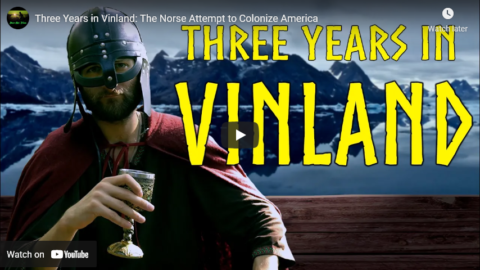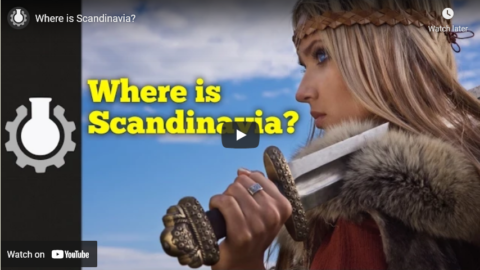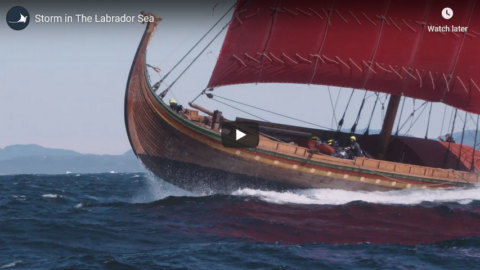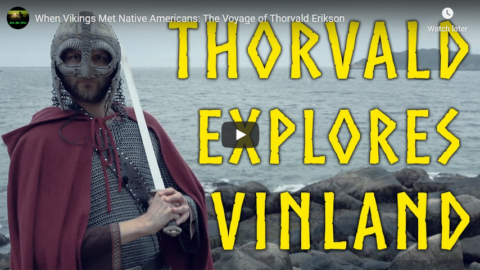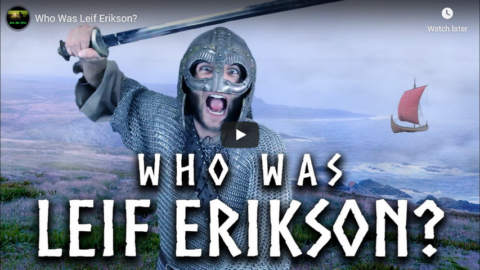Well, if by indigenous we mean “the minimally admixed descendants of the first humans to live in a place”, we can be pretty confident about the Polynesians, the Icelanders, and the British in Bermuda. Beyond that, probably also those Amazonian populations with substantial Population Y ancestry and some of the speakers of non-Pama–Nyungan languages in northern Australia? The African pygmies and Khoisan speakers of click languages who escaped the Bantu expansion have a decent claim, but given the wealth of hominin fossils in Africa it seems pretty likely that most of their ancestors displaced someone. Certainly many North American groups did; the “skraelings” whom the Norse encountered in Newfoundland were probably the Dorset, who within a few hundred years were completely replaced by the Thule culture, ancestors of the modern Inuit. (Ironically, the people who drove the Norse out of Vinland might have been better off if they’d stayed; they could hardly have done worse.)
But of course this is pedantic nitpicking (my speciality), because legally “indigenous” means “descended from the people who were there before European colonialism”: the Inuit are “indigenous” because they were in Newfoundland and Greenland when Martin Frobisher showed up, regardless of the fact that they had only arrived from western Alaska about five hundred years earlier. Indigineity in practice is not a factual claim, it’s a political one, based on the idea that the movements, mixtures, and wholesale destructions of populations since 1500 are qualitatively different from earlier ones. But the only real difference I see, aside from them being more recent, is that they were often less thorough — in large part because they were more recent. In many parts of the world, the Europeans were encountering dense populations of agriculturalists who had already moved into the area, killed or displaced the hunter-gatherers who lived there, and settled down. For instance, there’s a lot of French and English spoken in sub-Saharan Africa, but it hasn’t displaced the Bantu languages like they displaced the click languages. Spanish has made greater inroads in Central and South America, but there’s still a lot more pre-colonial ancestry among people there than there is pre-Bantu ancestry in Africa. I think these analogies work, because as far as I can tell the colonization of North America and Australia look a lot like the Early European Farmer and Bantu expansions (technologically advanced agriculturalists show up and replace pretty much everyone, genetically and culturally), while the colonization of Central and South America looks more like the Yamnaya expansion into Europe (a bunch of men show up, introduce exciting new disease that destabilizes an agricultural civilization,1 replace the language and heavily influence the culture, but mix with rather than replacing the population).
Some people argue that it makes sense to talk about European colonialism differently than other population expansions because it’s had a unique role in shaping the modern world, but I think that’s historically myopic: the spread of agriculture did far more to change people’s lives, the Yamnaya expansion also had a tremendous impact on the world, and I could go on. And of course the way it’s deployed is pretty disingenuous, because the trendier land acknowledgements become, the more the people being acknowledged start saying, “Well, are you going to give it back?” (Of course they’re not going to give it back.) It comes off as a sort of woke white man’s burden: of course they showed up and killed the people who were already here and took their stuff, but we’re civilized and ought to know better, so only we are blameworthy.
More reasonable, I think, is the idea that (some of) the direct descendants of the winners and losers in this episode of the Way Of The World are still around and still in positions of advantage or disadvantage based on its outcome, so it’s more salient than previous episodes. Even if, a thousand years ago, your ancestors rolled in and destroyed someone else’s culture, it still sucks when some third group shows up and destroys yours. It’s just, you know, a little embarrassing when you’ve spent a few decades couching your post-colonial objections in terms of how mean and unfair it is to do that, and then the aDNA reveals your own population’s past …
Reich gets into this a bit in his chapter on India, where it’s pretty clear that the archaeological and genetic evidence all point to a bunch of Indo-Iranian bros with steppe ancestry and chariots rolling down into the Indus Valley and replacing basically all the Y chromosomes, but his Indian coauthors (who had provided the DNA samples) didn’t want to imply that substantial Indian ancestry came from outside India. (In the end, the paper got written without speculating on the origins of the Ancestral North Indians and merely describing their similarity to other groups with steppe ancestry.) Being autochthonous is clearly very important to many peoples’ identities, in a way that’s hard to wrap your head around as an American or northern European: Americans because blah blah nation of immigrants blah, obviously, but a lot of northern European stories about ethnogenesis (particularly from the French, Germans, and English) draw heavily on historical Germanic tribal migrations and the notion of descent (at least in part) from invading conquerors.
One underlying theme in the book — a theme Reich doesn’t explicitly draw out but which really intrigued me — is the tension between theory and data in our attempts to understand the world. You wrote above about those two paradigms to explain the spread of prehistoric cultures, which the lingo terms “migrationism” (people moved into their neighbors’ territory and took their pots with them) and “diffusionism”2 (people had cool pots and their neighbors copied them), and which archaeologists tended to adopt for reasons that had as much to do with politics and ideology as with the actual facts on (in!) the ground. And you’re right that in most cases where we now have aDNA evidence, the migrationists were correct — in the case of the Yamnaya, most modern migrationists didn’t go nearly far enough — but it’s worth pointing out that all those 19th century Germans who got so excited about looking for the Proto-Indo-European Urheimat were just as driven by ideology as the 21st century Germans who resigned as Reich’s coauthors on a 2015 article where they thought the conclusions were too close to the work of Gustaf Kossinna (d. 1931), whose ideas had been popular under the Nazis. (They didn’t think the conclusions were incorrect, mind you, they just didn’t want to be associated with them.) But on the other hand, you need a theory to tell you where and how to look; you can’t just be a phenomenological petri dish waiting for some datum to hit you. This is sort of the Popperian story of How Science Works, but it’s more complex because there are all kinds of extra-scientific implications to the theories we construct around our data.
The migrationist/diffusionist debate is mostly settled, but it turns out there’s another issue looming where data and theory collide: the more we know about the structure and history of various populations, the more we realize that we should expect to find what Reich calls “substantial average biological differences” between them. A lot of these differences aren’t going to be along axes we think have moral implications — “people with Northern European ancestry are more likely to be tall” or “people with Tibetan ancestry tend to be better at functioning at high altitudes” isn’t a fraught claim. (Plus, it’s not clear that all the differences we’ve observed so far are because one population is uniformly better: many could be explained by greater variation within one population. Are people with West African ancestry overrepresented among sprinters because they’re 0.8 SD better at sprinting, or because the 33% higher genetic diversity among West Africans compared to people without recent African ancestry means you get more really good sprinters and more really bad ones?) But there are a lot of behavioral and cognitive traits where genes obviously play some role, but which we also feel are morally weighty — intelligence is the most obvious example, but impulsivity and the ability to delay gratification are also heritable, and there are probably lots of others. Reich is adorably optimistic about all this, especially for a book written in 2018, and suggests that it shouldn’t be a problem to simultaneously (1) recognize that members of Population A are statistically likely to be better at some thing than members of Population B, and (2) treat members of all populations as individuals and give them opportunities to succeed in all walks of life to the best of their personal abilities, whether the result of genetic predisposition or hard work. And I agree that this is a laudable goal! But for inspiration on how our society can both recognize average differences and enable individual achievement, Reich suggests we turn to our successes in doing this for … sex differences! Womp womp.
Jane Psmith and John Psmith, “JOINT REVIEW: Who We Are and How We Got Here, by David Reich”, Mr. and Mrs. Psmith’s Bookshelf, 2023-05-29.
1. aDNA works for microbes too, and it looks like Y. pestis, the plague, came from the steppe with the Yamnaya. It didn’t yet have the mutation that causes buboes, but the pneumonic version of the disease is plenty deadly, especially to the Early European Farmers who didn’t have any protection against it. In fact, as far as we can tell, in all of human history there have only been four unique introductions of plague from its natural reservoirs in the Central Asian steppe: the one that came with or slightly preceded the Yamnaya expansion around 5kya, the Plague of Justinian, the Black Death, and an outbreak that began in Yunnan in 1855. The waves of plague that wracked Europe throughout the medieval and early modern periods were just new pulses of the strain that had caused Black Death. Johannes Krause gets into this a bit in his A Short History of Humanity, which I didn’t actually care for because his treatment of historic pandemics and migrations is so heavily inflected with Current Year concerns, but I haven’t found a better treatment in a book so it’s worth checking it out from the library if you’re interested.
2. I cheated with that “pots not people” line in my earlier email; it usually gets (got?) trotted out not as a bit of epistemological modesty about what the archaeological record is capable of showing, but as a claim that the only movements involved were those of pots, not of people.
April 4, 2024
QotD: What we mean by the term “indigenous”
October 10, 2021
Three Years in Vinland: The Norse Attempt to Colonize America
Atun-Shei Films
Published 9 Oct 2021Happy Leif Erikson Day! Some time after Thorvald Erikson’s disastrous voyage to the mysterious lands west of Greenland, a wealthy Icelander named Thorfinn Karlsefni financed and led an expedition of his own, with the goal of establishing a permanent Norse settlement in Vinland. Karlsefni and his crew would spend three summers in the New World, where they would have to deal with internal division, hostile Native Americans, and (according to some) the wrath of demonic mythological creatures.
Support Atun-Shei Films on Patreon ► https://www.patreon.com/atunsheifilms
Leave a Tip via Paypal ► https://www.paypal.me/atunsheifilms
Buy Merch ► https://teespring.com/stores/atun-she…
#LeifErikson #Vinland #History
Original Music by Dillon DeRosa ► http://dillonderosa.com/
Reddit ► https://www.reddit.com/r/atunsheifilms
Twitter ► https://twitter.com/atun_shei~REFERENCES~
[1] Magnus Magnusson & Hermann Pálsson. The Vinland Sagas: The Norse Discovery of America (1965). Penguin Books, Page 7-43
[2] Birgitta Wallace. “Karlsefni” (2006). The Canadian Encyclopedia [https://www.thecanadianencyclopedia.c..].
[3] Lorraine Boissonault. “L’Anse Aux Meadows and the Viking Discovery of North America” (2005). JSTOR Daily https://daily.jstor.org/anse-aux-mead…
May 23, 2021
Where is Scandinavia?
CGP Grey
Published 25 Mar 2015Grey Merch: https://cgpgrey.com/merch
Grey on Twitter: https://twitter.com/cgpgrey
December 16, 2020
Storm in the Labrador Sea
Draken Harald Hårfagre
Published 20 Aug 20168 minutes with the amazing Draken Viking Ship. This is the film we showed in our exhibition tent on the festivals around the Great Lakes, filmed between Greenland and Newfoundland on the crossing of the North Atlantic Ocean.
October 10, 2020
When Vikings Met Native Americans: The Voyage of Thorvald Erikson
Atun-Shei Films
Published 9 Oct 2020Happy Leif Erikson Day! After Leif’s discovery of unknown lands to the west of Greenland, his brother Thorvald set off on an expedition of his own. Thorvald’s voyage, as related in the medieval Icelandic text The Saga of the Greenlanders, marks the first time in recorded history that Europeans came face-to-face with Native Americans. In this video, I regale you with this tale of adventure, exploration, and cultural collision. And for some reason, I spend about a third of the video talking about a bowl, a coin, and some yarn made of goat hair.
Support Atun-Shei Films on Patreon ► https://www.patreon.com/atunsheifilms
Leave a Tip via Paypal ► https://www.paypal.me/atunsheifilms (All donations made here will go toward the production of The Sudbury Devil, our historical feature film)
Buy Merch ► teespring.com/stores/atun-shei-films
#LeifErikson #Vinland #History
Original Music by Dillon DeRosa ► http://dillonderosa.com/
Reddit ► https://www.reddit.com/r/atunsheifilms
Twitter ► https://twitter.com/atun_shei~REFERENCES~
[1] Magnus Magnusson & Hermann Pálsson. The Vinland Sagas: The Norse Discovery of America (1965). Penguin Books, Page 59-61
[2] Sîan Grønlie. The Book of the Icelanders / The Story of the Conversion (2006). Viking Society for Northern Research, Page 4
[3] Ingeborg Marshall. “Beothuk Transportation” (1998). Heritage Newfoundland and Labrador https://www.heritage.nf.ca/articles/a…
[4] Patricia Sutherland. Dorset-Norse Interactions in the Canadian Arctic (2000). Canadian Museum of Civilization, Page 2-9
September 7, 2020
Who Was Leif Erikson?
Atun-Shei Films
Published 9 Oct 2019Happy Leif Erikson Day! Allow me to regale you with the saga of the daring Viking who sailed to North America five hundred years before Columbus (that hack) and called it Vinland. We all know his name and his famous deeds – but what sort of man was Leif Erikson?
Support Atun-Shei Films on Patreon ► https://www.patreon.com/atunsheifilms
#LeifErikson #Viking #History
Watch our film ALIEN, BABY! free with Prime ► http://a.co/d/3QjqOWv
Reddit ► https://www.reddit.com/r/atunsheifilms
Twitter ► https://twitter.com/alienbabymovie
Instagram ► https://www.instagram.com/atunsheifilms
Merch ► https://atun-sheifilms.bandcamp.com
October 29, 2019
Greenland to USA, Australia to war, and French Colonies to…? – WW2 – OOTF 004
World War Two
Published 27 Oct 2019In another edition of our Q&A format, Indy answers some questions about Greenland after the German occupation of Denmark, the state of Australia and the fate of the French Colonies.
Ask your own question for OOTF: https://community.timeghost.tv/c/Out-…
Join us on Patreon: https://www.patreon.com/TimeGhostHistory
Or join The TimeGhost Army directly at: https://timeghost.tvFollow WW2 day by day on Instagram @World_war_two_realtime https://www.instagram.com/world_war_t…
Join our Discord Server: https://discord.gg/D6D2aYN.
Between 2 Wars: https://www.youtube.com/playlist?list…
Source list: http://bit.ly/WW2sourcesHosted by: Indy Neidell
Produced and Directed by: Spartacus Olsson and Astrid Deinhard
Executive Producers: Bodo Rittenauer, Astrid Deinhard, Indy Neidell, Spartacus Olsson
Creative Producer: Joram Appel
Research by: Rune Vaever Hartvig
Edited by: Mikołaj Cackowski
Map animations: EastoryColorisations by Norman Stewart and Julius Jääskeläinen https://www.facebook.com/JJcolorization/
Eastory’s channel: https://www.youtube.com/channel/UCEly…
Archive by Screenocean/Reuters https://www.screenocean.com.Sources:
IWM: H 10569, A 1524, CM 64A TimeGhost chronological documentary produced by OnLion Entertainment GmbH.
From the comments:
World War Two
3 days ago
We get a ton of questions about the war on a daily basis. A lot of them are already answered in the YouTube comments to you all directly, but because some questions are very interesting indeed, we like to showcase some of them on the channel. Because the YouTube comments are hard to navigate, we have made a section on our forum where you can submit questions to be covered in Out of the Foxholes. You can do that here: https://community.timeghost.tv/c/Out-of-the-Foxholes-QsCheers,
The TimeGhost team
December 11, 2018
Viking Expansion – Lies – Extra History
Extra Credits
Published on 8 Dec 2018Writer Rob Rath talks about all the cool stories and facts we didn’t get to cover in the already expansive Viking Expansion series.
Join us on Patreon! http://bit.ly/EHPatreon
7:08 – Rob learns he has a linguistic tic about being able to correctly distinguish “ancestor” and “descendant”
17:10 – Olga of Kiev scared Matt to death… really though…
25:23 – Walpole Connection
28:05 – what’s next on Extra HistorySome other works to check out: The Sea Wolves: A History of the Vikings, by Lars Brownworth / The Vikings, by Else Roesdahl / Podcast: Norse by Northwest
December 3, 2018
Viking Expansion – Wine Land – Extra History – #6
Extra Credits
Published on 1 Dec 2018From Greenland, explorers like Bjarni, Freydis, and Leif Erikson — aka “Leif the Lucky” — ventured into Vinland, the very first bit of North America sighted by Europeans. It was rich in natural resources, including the grapes (and thus wine) for which it received its title, but this set of expeditions would be very, very short-lived…
Join us on Patreon! http://bit.ly/EHPatreon
November 27, 2018
Viking Expansion – A Song of Ice and Greenland – Extra History – #5
Extra Credits
Published on 24 Nov 2018The Scandinavians stumbled on Iceland, at first on accident — then, gradually exploring it — and finally intentionally migrating there because despite the clash of glaciers and volcanoes, Iceland was full of uninhabited empty land — perfect for settlers and saga-writers.
Join us on Patreon! http://bit.ly/EHPatreon
November 14, 2017
Why the Vikings Disappeared
KnowledgeHub
Published on 17 Feb 2017The Vikings were infamous in the Middle Ages for their raids against the coasts of Northern Europe. Their age however was quite brief in the span of time, only 300 years. What caused the end of the Vikings?
February 27, 2017
“Dumb Norsemen go into the north outside the range of their economy, mess up the environment and then they all die when it gets cold”
Debunking the Greenland myth in the Smithsonian:
Those tough seafaring warriors came to one of the world’s most formidable environments and made it their home. And they didn’t just get by: They built manor houses and hundreds of farms; they imported stained glass; they raised sheep, goats and cattle; they traded furs, walrus-tusk ivory, live polar bears and other exotic arctic goods with Europe. “These guys were really out on the frontier,” says Andrew Dugmore, a geographer at the University of Edinburgh. “They’re not just there for a few years. They’re there for generations — for centuries.”
So what happened to them?
**********
Thomas McGovern used to think he knew. An archaeologist at Hunter College of the City University of New York, McGovern has spent more than 40 years piecing together the history of the Norse settlements in Greenland. With his heavy white beard and thick build, he could pass for a Viking chieftain, albeit a bespectacled one. Over Skype, here’s how he summarized what had until recently been the consensus view, which he helped establish: “Dumb Norsemen go into the north outside the range of their economy, mess up the environment and then they all die when it gets cold.”
[…]
But over the last decade a radically different picture of Viking life in Greenland has started to emerge from the remains of the old settlements, and it has received scant coverage outside of academia. “It’s a good thing they can’t make you give your PhD back once you’ve got it,” McGovern jokes. He and the small community of scholars who study the Norse experience in Greenland no longer believe that the Vikings were ever so numerous, or heedlessly despoiled their new home, or failed to adapt when confronted with challenges that threatened them with annihilation.
“It’s a very different story from my dissertation,” says McGovern. “It’s scarier. You can do a lot of things right — you can be highly adaptive; you can be very flexible; you can be resilient — and you go extinct anyway.” And according to other archaeologists, the plot thickens even more: It may be that Greenland’s Vikings didn’t vanish, at least not all of them.
H/T to Kate at Small Dead Animals for the link.
April 17, 2015
Viking Greenland during the Little Ice Age
Charlotte Persson looks at what happened to the Viking settlers in Greenland as the Little Ice Age set in:
In the middle of the 13th century the Vikings who had settled in Greenland encountered no less than ten years of harsh and cold winters and summers. The Norsemen, who were living as farmers, bid farewell to many of their cattle during that period.
The Greenland Vikings were also prevented from setting sail to fetch supplies from their homelands in Europe because they didn’t have enough timber to build trading ships. So when Scandinavian traders didn’t happen to pass by they were left entirely on their own.
But this didn’t knock them out; on the contrary they lived with the worsening climate for almost 200 years during what we later would call the Little Ice Age. This is the conclusion of a new Ph.D. thesis.
“The stories we have heard so far about the climate getting worse and the Norsemen disappearing simply don’t hold water. They actually survived for a long time and were far better at adapting than we previously thought,” says the author of the new study, Christian Koch Madsen, Ph.D. student at the National Museum of Denmark.
September 22, 2011
“A piece of half-baked speculation had simply been used without checking because, well, it seemed true enough”
Tim Black on the recent Times Atlas gaffe over the Greenland ice sheet:
For those all too inclined to believe the worst in the warmest of all possible worlds, there was no need to question the Times Atlas’s revelation. It merely told them what they already knew — that our nasty industrialised ways are destroying Earth.
But among those who actually know a little about ice sheets, the atlas’s findings were a little too much of a revelation. First up were researchers from the Scott Polar Research Institute at the University of Cambridge, who promptly wrote to the atlas’s editors: ‘There is to our knowledge no support for this [15 per cent] claim in the published scientific literature.’ Other scientists in the field were quick to back up the Cambridge researchers. ‘The claims here’, said Graham Cogley from Trent University, ‘are simply not backed up by science; this pig can’t fly’. Others agreed. Jeffrey Kargel of the University of Arizona, principal scientist on a project involving the mapping of ice and glaciers from space, was unequivocal: ‘These new maps are ridiculously off base, way exaggerated relative to the reality of rapid change in Greenland. I don’t know how exactly the Times Atlas produced their results, but they are not scientific results.’
So how exactly did the Times Atlas cartographers produce their results? More kindly commentators have suggested that the atlas bods foolishly relied on the National Snow and Ice Data Center-maintained online resource, the Atlas of the Cryosphere. This apparently shows the thickness of the central part of the ice sheet over Greenland, but it does not show the thickness of the ice sheet’s periphery. The cartographers presumably interpreted this to mean that the peripheral ice did not exist — that it had melted. Other critics have been less generous, with one suggesting they might have been just a little too reliant on that bastion of truth, Wikipedia.
While it’s fun to pile on when a respected publication gets caught out trying for sensation instead of presenting facts, Black also sounds a note of caution:
Yet such over-eager triumphalism on the part of climate-change sceptics is misplaced. This is not because advocates of climate change are not frequently making mistakes. And it is not because the climate-change narrative, demanding so many facts to fit its story of manmade doom, is not fundamentally flawed. No, the problem with celebrating every scientific, factual refutation of the climate-change thesis as the beginning of the end for what remains the dominant narrative of our times, despite growing public indifference, is that climate change is not primarily a scientific issue. It was not born in science labs or in meteorology centres. And likewise, it will not be defeated by scientists or meteorologists, either.
That is because climate change is principally a political issue, not a scientific one. Climate-change alarmism is about channelling a vision of the future in which man, producing too much and consuming far more, is conceived as a problem. And the only way to challenge this widespread political and moral outlook is by coming up with something a little less human-hating — a political vision in which humanity’s needs and desires, our productive capacities and our consuming wants, are championed rather than denigrated. To rely on the mistakes of climate-change advocates to undermine their own cause is no substitute for the long-awaited, never-seen political debate about climate change.
September 20, 2011
New Times Atlas vastly overstates Greenland ice sheet shrinkage
You know it’s a major gaffe when even the BBC’s Environment correspondent is saying things like this:
The part of News Corporation that makes Times Atlases is currently taking the same kind of kicking from scientists that some of its newspapers took from the general public over phone-hacking.
What it’s being kicked for is for claiming, in the edition that came out last week, that the Greenland ice sheet has shrunk by 15% over 12 years, necessitating the re-drawing of its boundaries.
[. . .]
The problem is, it’s not true; and glaciologists have been queuing up to say why not.
“In the aftermath of ‘Himalayagate’, we glaciologists are hypersensitive to egregious errors in supposedly authoritative sources,” said Graham Cogley from Trent University in Canada.
“Climate change is real, and Greenland ice cover is shrinking. But the claims here are simply not backed up by science; this pig can’t fly.”
As Professor Cogley was the scientist who raised the alarm over “Himalayagate” — the erroneous Intergovernmental Panel on Climate Change (IPCC) contention that Himalayan glaciers could largely melt away by 2035 — he is well placed to make the comparison.
Update: Breaking! James Delingpole discovers the advance plans for the next Times Atlas:
Following its controversial decision to produce a map suggesting that Greenland has lost 15 per cent of its ice cover in the last twelve years — a loss rate disputed by most credible scientists: and even, amazingly, the Guardian agrees on this — the Times Comprehensive Atlas Of The World has decided to take its new role as cheerleader for Climate Change alarmism a step further. In its upcoming 14th edition, unconfirmed rumours suggest, it will completely omit Tuvalu, the Maldives and major parts of Bangladesh in order to convey the “emotional truth” about “man made climate change.”
“All right, it may not be strictly geographically accurate to say the Maldives and Tuvalu will definitely have disappeared in about ten years time when our next edition appears,” said Times Atlas spokesman David Rose. “But did you see that picture of the Maldives cabinet holding a meeting underwater? If the Maldives government says the Maldives are drowning, they must be drowning. And frankly I think it’s despicable, all those deniers who are saying it was just a publicity stunt, cooked up by green activist Mark Lynas, to blackmail the international community into giving the Maldives more aid money while simultaneously trying to lure green Trustafarians to come and spend £1500 a night in houses on stilts with gold-plated organic recyclable eco-toilets made of rare earth minerals from China. Why would a government lie about something as serious as climate change?”

